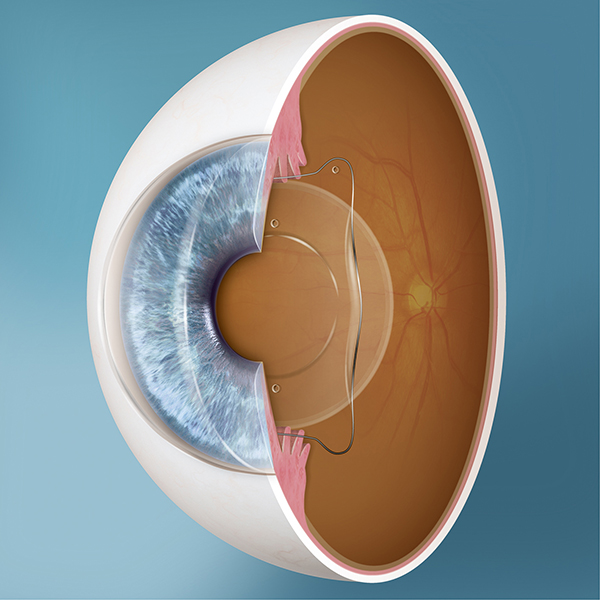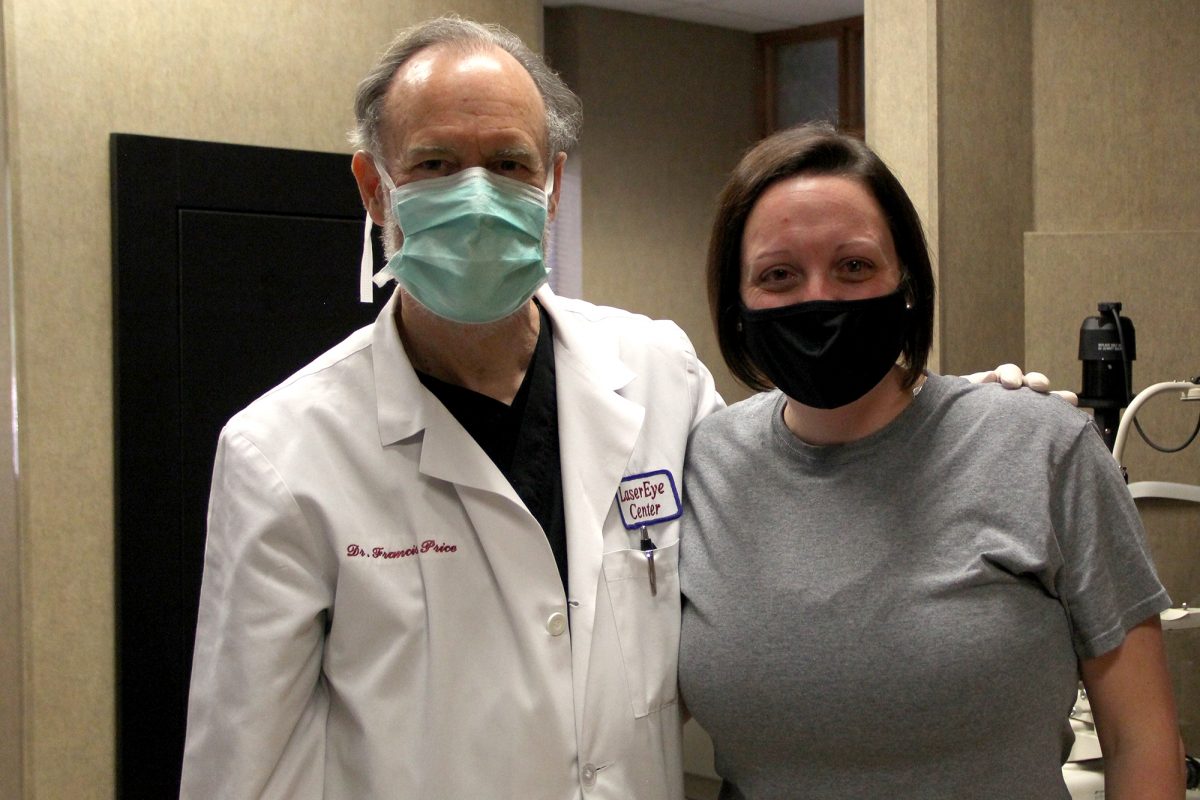People suffering from dry eye can experience a few or many of the following symptoms: It may be surprising but another common symptom of having dry eyes is the constant watering of your eyes. Your body’s natural response to low tear production or low-quality tears is to increase tear production.
We have several ways to identify the root cause of your dry eye. We will first have you fill out a questionnaire to understand the symptoms you are experiencing as well as the steps you’ve taken to treat the symptoms. We will perform a corneal topography scan to study the surface of your eye. This technology gives us a sense of the overall smoothness of the ocular surface by reflecting light off the cornea and back into a camera. A special infrared imaging device may be used to view how well your meibomian glands are functioning. Studies have shown that 70-80% of patients suffering from dry eye symptoms have “evaporative tear loss.” The meibomian glands are responsible for producing the oil layer of the tear film to prevent the tears from evaporating too quickly. Blocked glands will produce tears that have inadequate amounts of oil which leads to quickly evaporating tears. Meibomian gland dysfunction (MGD) is one of the most common causes of dry eye. Depending on our findings, your dry eye condition will be placed into one of three categories of severity.
If you’re in Category 1, we will typically recommend a warm compress placed over the eyes twice a day to help clear up the blockage in the meibomian glands. We might also prescribe artificial tears to help provide lubrication for the eyes.
If you’re in Category 2, your dry eye might be caused by inflammation. In this case, we would recommend prescription medication eye drops such as Xiidra, Restasis or Cequa. These drops work to break the inflammatory cycle by influencing the immune system.
If the diagnosis for your dry eye is evaporative tear loss, we might recommend Intense Pulsed Light (IPL) therapy to treat the obstructed meibomian glands. This technology uses quick bursts of light to change blood vessels near the surface of the skin around the eyes. IPL therapy has been shown to reduce the blockage and helps the eyes produce a better quality tear film.
If you’re in Category 3, aggressive management is required as the integrity of the eye itself is at risk. An amniotic membrane may be placed on the eye as it is packed with anti-inflammatory, anti-scarring, and pro-growth to jump-start the healing process. We may prescribe serum tears which are specialty tears developed from the patient’s blood. The patient reports to a lab, has their blood processed and then mixed with the typical components of artificial tears. Interestingly, our blood is enriched with many anti-inflammatory growth factors that help restore the normal functioning of the ocular surface.
I think I have dry eye, what are my treatment options?
 At Price Vision Group, we have a comprehensive list of treatment options for dry eye (ocular surface disorder) depending on the level of severity. The first step is to identify the symptoms of dry eye.
At Price Vision Group, we have a comprehensive list of treatment options for dry eye (ocular surface disorder) depending on the level of severity. The first step is to identify the symptoms of dry eye.What are the symptoms of dry eye?
I have several of the symptoms described, what’s the cause of my dry eye?
 An analysis will be performed to assess the stability of your tear film. During this test, a dark orange dye called fluorescein is placed onto the surface of your eye. Your doctor will view your eye using a special light to monitor how quickly your tears evaporate.
An analysis will be performed to assess the stability of your tear film. During this test, a dark orange dye called fluorescein is placed onto the surface of your eye. Your doctor will view your eye using a special light to monitor how quickly your tears evaporate.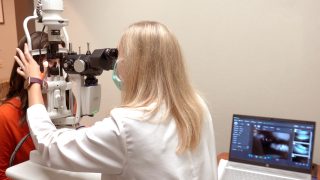
Category 1
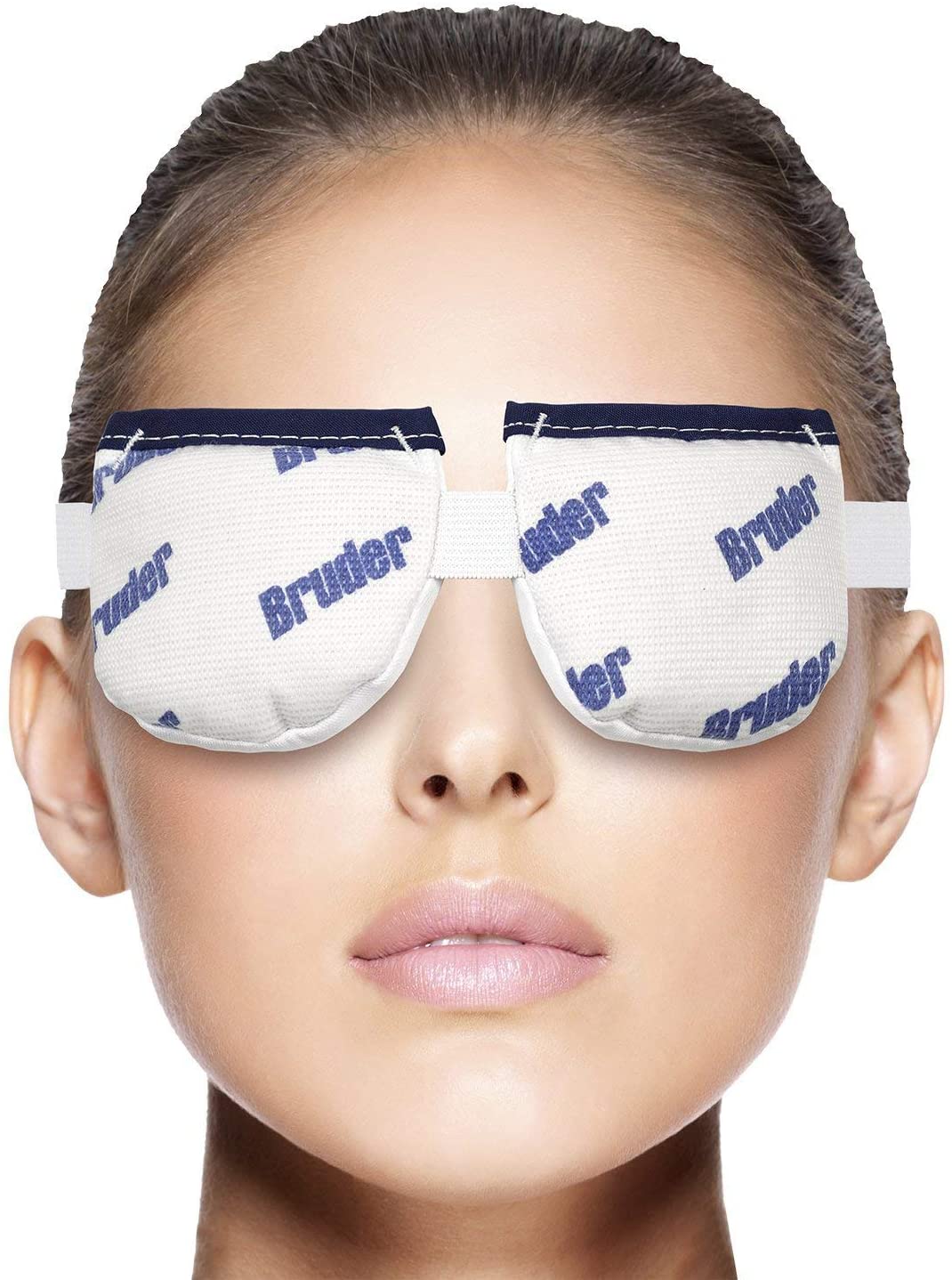
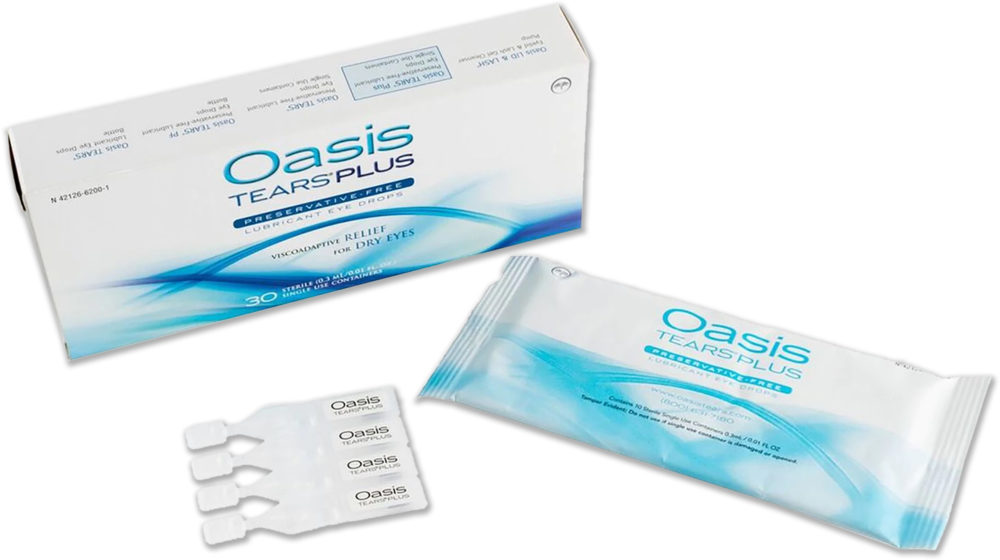
Category 2

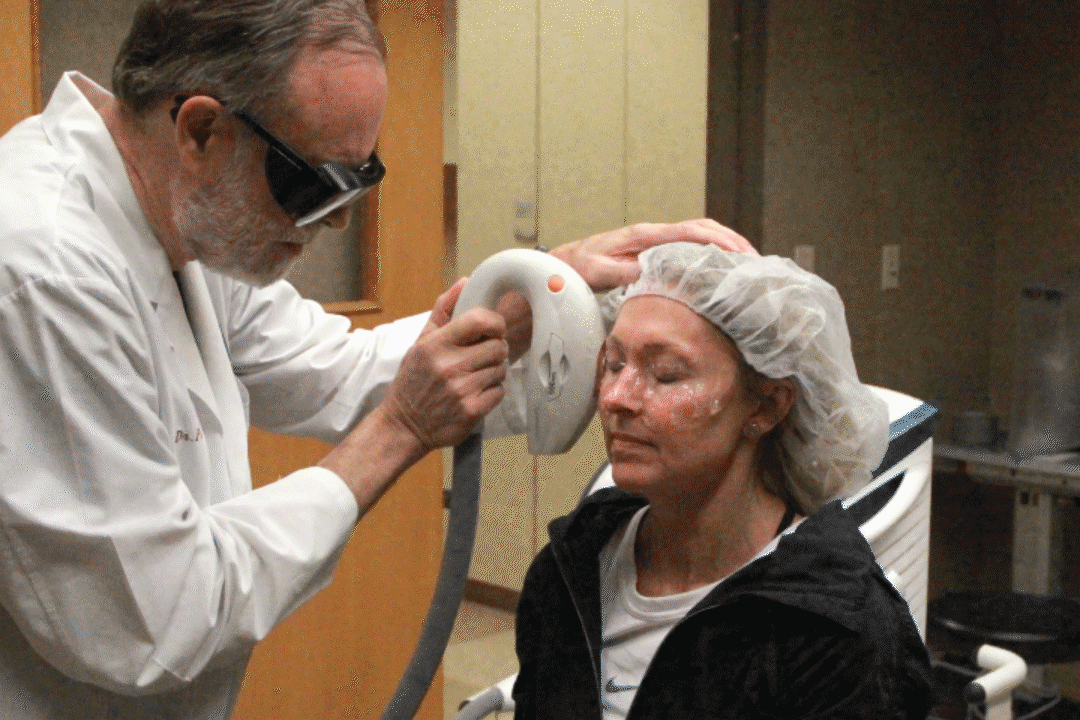
Category 3
THE LATEST NEWS FROM PRICE VISION GROUP

Indianapolis, IN – Dr. Matthew Feng of Price Vision Group will be the first ophthalmologist in Indiana to use the new FDA-approved drug, Oxervate™ (cenegermin). The patient, Tina Hunter, has vision loss due to neurotrophic keratitis (NK). NK is a rare, degenerative corneal disease for which previous treatments include artificial tears or autologous serum tears, which are custom made from a patient’s own blood at a specialized pharmacy. More invasive treatment options are available for difficult cases and include an amniotic membrane graft, having your eye sewn shut, or a nerve transplant.
This landmark drug is the only treatment with complete corneal healing potential in just 8 weeks of eye drop use for NK patients. “It’s exciting to be able to offer these patients a new opportunity for healing, that keeps them out of the operating room, with a simple eye drop treatment. We are continually looking for new and better ways to improve patient outcomes and are hopeful this will help restore the quality of life for many patients,” said Dr. Feng
In Tina’s case, tears alone were not successful and her right eyelid was sewn shut. Tina said, “The eye specialist at another center told me that my eye could never be opened. There was nothing that they can do. I was told I couldn’t drive. My independence was gone. To have that taken away, you don’t know what that means. When I was referred to Price Vision Group, Dr. Feng told me about this new drug and that I’m a prime candidate for it.”
What is neurotrophic keratitis?
Neurotrophic keratitis is diagnosed when the eye loses normal sensation to its cornea, the front clear dome of the eye. Because light must pass through the cornea to enter the eye, vision loss can result when the cornea becomes dry, irregular, or scarred. In severe cases of NK, ulceration and perforation can result. According to Dr. Feng, “most of the corneal nerve damage that I see results from diabetes, shingles, and/or trauma. NK is like a diabetic foot ulcer of the eye and historically has been equally challenging to treat.”
What is Oxervate and how does it treat NK?
Oxervate™ is a topical eye drop containing the active ingredient, cenegermin. It is a human nerve growth factor to stimulate the regeneration of corneal nerves and restoration of corneal sensation. The safety and efficacy of Oxervate™ were established on 151 NK patients in two 8-week, randomized, controlled, multi-center, double-masked studies. In both studies, patients were given the drops six times a day in the affected eyes for 8 weeks. “The data showed that 72% of patients who received Oxervate were actually cured after that 8-week period,” said Dr. Feng, adding, “It’s not often that we can cure a chronic disease.” For Tina, regaining her independence is what she is looking forward to most. “To have better vision and there’s some hope when I didn’t have any before is just awesome.”
The most common adverse reactions in patients taking Oxervate™ are eye pain, ocular hyperemia (enlarged blood vessels in the white of the eyes), eye inflammation, and increased lacrimation (watery eyes).
If you or someone you know might benefit from Oxervate™, please schedule an [consultation]appointment[/consultation] at Price Vision Group, or call us at (317) 844-5530.
 There are other refractive procedures that can eliminate your need for glasses even if your corneas are too thin for LASIK. During a refractive exam at Price Vision Group, many special tests are performed to ensure you are indeed a good candidate for LASIK, including corneal thickness. The average corneal thickness is between 520 microns and 540 microns, however, the normal range for cornea thickness can range from as thin as 470 to as thick as 630 microns. In order to be a candidate for LASIK there needs to be enough corneal tissue to make a flap, take away the tissue in order to correct the refractive error, and still have enough corneal tissue to ensure that corneal ectasia, a progressive bulging of the cornea, does not occur. To learn more about cornea thickness and how it affects LASIK candidacy, please click here. If the cornea is not thick enough to result in a corneal bed, the remaining cornea beneath the flap, of approximately 300 microns then LASIK is likely not the best refractive procedure for you. During a refractive exam at Price Vision Group, the doctor runs calculations to ensure that the cornea is thick enough for LASIK.
There are other refractive procedures that can eliminate your need for glasses even if your corneas are too thin for LASIK. During a refractive exam at Price Vision Group, many special tests are performed to ensure you are indeed a good candidate for LASIK, including corneal thickness. The average corneal thickness is between 520 microns and 540 microns, however, the normal range for cornea thickness can range from as thin as 470 to as thick as 630 microns. In order to be a candidate for LASIK there needs to be enough corneal tissue to make a flap, take away the tissue in order to correct the refractive error, and still have enough corneal tissue to ensure that corneal ectasia, a progressive bulging of the cornea, does not occur. To learn more about cornea thickness and how it affects LASIK candidacy, please click here. If the cornea is not thick enough to result in a corneal bed, the remaining cornea beneath the flap, of approximately 300 microns then LASIK is likely not the best refractive procedure for you. During a refractive exam at Price Vision Group, the doctor runs calculations to ensure that the cornea is thick enough for LASIK.

A phakic IOL may be a better refractive option to eliminate your need for glasses or contact lens visual correction if the cornea is not thick enough. The Visian ICL (Implantable Collamer Lens) is FDA approved to correct myopia ranging from -3.00 D to -15.00 D. This small lens implant is implanted behind the iris (colored part of the eye) and in front of the natural lens inside the eye to correct the refractive error. The lens is designed to stay in position in the eye and requires no special care and the corneal thickness is not altered as in LASIK. The best candidates for this refractive surgery option are those under the age of 50.
If you are above the age of 50 and not a candidate for LASIK because of a thin cornea, then a refractive lensectomy or refractive lens extraction may be a better refractive surgery option. The natural lens is removed, as in cataract surgery and an IOL is implanted. The IOL is calculated to correct your refractive error. There are implants to correct astigmatism and even multifocal IOLs that allow patients to see well at both distance and near. This refractive surgery allows for the correction of myopia, hyperopia, and astigmatism without altering the cornea thickness.
If you have been told you are not a candidate for LASIK there are other safe surgical options that can eliminate your need for glasses or contact lenses.
Join the EVO USA Study
Break free from Glasses & Contact Lenses
Ready to Experience Visual Freedom?
If you suffer from nearsightedness or astigmatism, EVO may improve your distance vision without glasses or contact lenses. Your eyeglass prescription can usually tell you how much nearsightedness and/or astigmatism you have. Consult with your eye doctor, who will conduct a thorough examination to find out whether you’re a candidate for the EVO USA Study and the EVO procedure.
It’s time to experience the EVO difference
The EVO procedure is designed to improve sight by treating a wide range of eyeglass or contact lens prescriptions. Made from Collamer®, a unique implantable material, the replaceable lens works naturally with your eye to improve vision-without changing your cornea. As a result, over 1 million lenses have been implanted outside of the US and 99.4% of patients would do the procedure again.
How EVO Works
The EVO biocompatible lens is placed behind your iris (colored part of your eye) and in front of the natural lens. The EVO lens focuses light on the back surface of your eye to improve your vision. Unlike other procedures, the EVO procedure does not remove corneal tissue, but is additive, and works in harmony with your natural eye.
Join the EVO USA Study
To learn more about this study, and to see if you qualify, please call (317) 814-2820 and ask to speak with Sam Ven. If you are eligible and participate in this research study, you will be asked to return for examinations to evaluate your vision.
Sam Ven
(317) 814-2820
Price Vision Group
9002 N. Meridian Street
Suite 106
Indianapolis, IN 46260
The little hole is only 360 microns (.36 mm) in diameter but it makes a world of difference for safety and visual quality. The little hole is the small central port placed in the middle of an ICL (Implantable Collamer Lens) from STAAR Surgical. This lens implant is called the EVO. The small hole eliminates the need to make an opening in the colored part of the eye (the iris). During implantation of the original ICL, an opening in the colored part of the eye (known as an iridotomy/iridectomy) was needed to prevent a type of glaucoma. Creating the opening during surgery in the iris could cause initial bleeding in some cases and, for some patients, could lead to visual distortions from the light passing through that opening. With the EVO lens, this is no longer the case. Over 1 million EVO lenses have been implanted outside the US prior to the recent FDA approval of the EVO lens in the US. An added feature is that it appears to be more physiologic having the fluid that is made behind the iris come through this middle hole instead of one made in the peripheral part of the iris. This appears safer for both the cornea (the window of the eye) and the natural crystalline lens. The development of cataracts is less likely to occur earlier than normal in eyes with EVO lenses based on what doctors tell me from outside the US. We are excited to be one of the first practices offering the EVO Visian ICL in the US. The EVO is easily removed later in life when cataracts naturally occur, and the EVO does not make changes to the corneal surface or increase the risk of dry eye symptoms. It is a great breakthrough.
THIS LITTLE HOLE by Dr. Francis Price
Why is this little hole such a big deal?

Indianapolis, IN – March 10, 2021 – Price Vision Group announced today that it is the first site to initiate patient treatment in a clinical trial evaluating use an experimental drug treatment in conjunction with a surgical procedure that treats the back surface of the cornea to restore vision in patients with a condition called Fuchs Endothelial Corneal Dystrophy (FECD). More than four percent of the population over the age of 40 is at risk of developing FECD and this disease is the leading cause of corneal transplantation in the U.S.
FECD results from the loss of specific cells (endothelial cells) that line the back of the cornea, over time this leads to cloudy vision and potentially blindness. The clinical trial is being conducted in FECD patients who are already planning to undergo a surgical procedure, referred to as DSO (Descemet Stripping Only) or DWEK (Descemetorhexis without Endothelial Keratoplasty). This procedure removes diseased cells and the collagen bumps (guttae) they produce from a central area of the cornea. Normal cells then repopulate the area over time to improve vision. The clinical trial will evaluate whether administering an experimental drug, TTHX1114 (an engineered form of a natural protein called FGF-1) can accelerate and enhance the visual recovery process. Patients participating in the clinical trial will have the option to receive TTHX1114 in addition to DSO surgery or to receive DSO surgery alone.
“The Price Vision Group strives to provide state of the art care to our patients,” said Dr. Francis Price, founder of the practice. “DSO is an innovative new procedure that provides an alternative to corneal transplantation. As a provider of the DSO procedure, we are excited to participate as one of the sites in the U.S. in this clinical trial of TTHX1114.”
About FECD and corneal endothelial disorders
Corneal endothelial cells line the interior of the cornea and are critical to maintaining its appropriate hydration state, which enables the cornea to function properly. FECD, the most common corneal endothelial disorder, is the leading cause of corneal transplantation/graft in the U.S.
The hallmark of FECD is excessive loss of endothelial cells and the formation of collagen bumps (guttae), resulting in diminished vision and, in severe cases, blindness. Loss of these cells is also a contributor to poor outcomes in eye surgery, including cataract surgery.
Although transplant surgery with human donor corneas has been shown to be effective in restoring vision for many FECD patients, most patients require long‑term immune suppression therapy which can have unintended side effects. DSO, which has been developed as an alternative to corneal transplants, does not require donor tissue and therefore eliminates the need for immune suppressive drugs.
About TTHX1114
TTHX1114 is an engineered form of the naturally occurring molecule Fibroblast Growth Factor-1 (FGF-1), which stimulates cell proliferation and migration as well as protects cells from stress and injury. TTHX1114 has been engineered to increase FGF-1’s longevity in the eye, enabling its use as a pharmaceutical. The study is sponsored by San Diego-based Trefoil Therapeutics, a private biotechnology company developing therapeutics for corneal diseases.
About Price Vision Group
Price Vision Group is a d/b/a of Corneal Consultants of Indiana, P.C., an internationally recognized center for the diagnosis, treatment, and care in the field of corneal and refractive surgery. We, along with our research partner, Cornea Research Foundation of America, have conducted more than 160 studies including those that led to the FDA approval of LASIK.
For more than 30 years, The Price Vision Group has utilized the latest technology while conducting ground-breaking research to provide cutting-edge services to patients from all over the world.
In addition to training over 600 doctors from around the world, Price Vision Group surgeons have performed more cornea transplants than any other practice in North America. As some of the world’s foremost experts in corneal care, Price Vision Group are sent some of the most challenging surgical cases based on their expertise and experience with complex corneal procedures.
Contacts:
Patients
Marianne Price, Ph.D.
Executive Director
Cornea Research Foundation of America
317-814-2990
mprice@cornea.org
Media
Robert Gottlieb
RMG Associates, LLC
857-891-9091
robertmg52@gmail.com
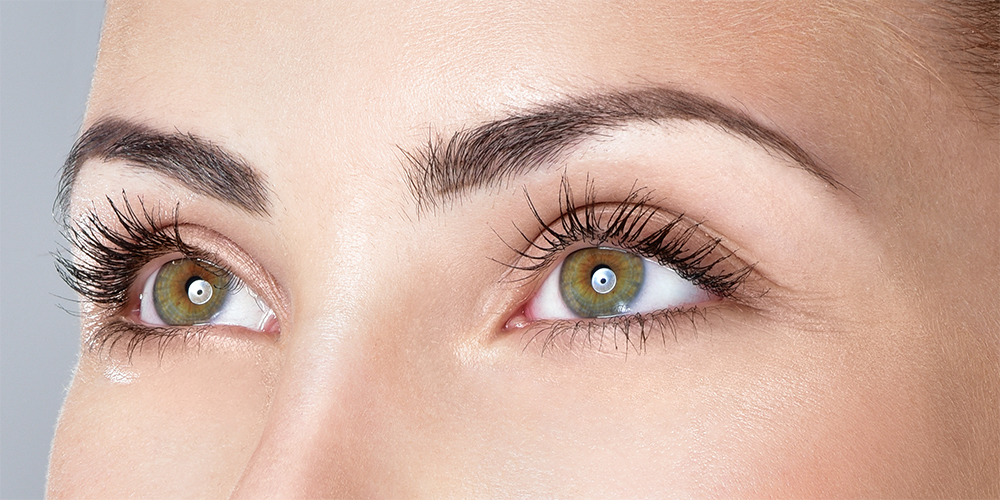
Price Vision Group is currently enrolling participants for a LASIK clinical study. If you are nearsighted and need glasses/contacts to see clearly, you may qualify for this study. Qualified study participants will be compensated for their time.
There is no cost to the patient but the clinical study will require participants to attend several postoperative follow-up visits.
If interested, please complete and submit the following form.
Enrollment for the LASIK study has been placed on hold for the time being due to participant slots being full. We will update this post if additional slots become available.
Trefoil Therapeutics Begins First Clinical Trial at Price Vision Group for Patients with Corneal Endothelial Dystrophies
SAN DIEGO–(BUSINESS WIRE)–Trefoil Therapeutics today announced it has initiated the first clinical trial of its engineered Fibroblast Growth Factor-1 TTHX1114 for the treatment of people with corneal endothelial dystrophies (CED), including Fuchs Endothelial Corneal Dystrophy. To read the full press release, please click here.
Indianapolis, Indiana – Back in May, Price Vision Group started a promotion to thank the hardworking essential heroes by giving four lucky winners free LASIK eye surgery. Hospital worker, Carolyn Rogers was the first contest winner to undergo the procedure on Tuesday.
“The idea came up during a staff meeting for the refractive department. We were talking about a time when a staff member went grocery shopping and noticed that the cashier had her mask on but her nose was exposed. When it was pointed out that she was wearing her mask incorrectly, the cashier complained that her glasses kept getting fogged up when her mask covered both her mouth and nose,” said Brian Hogan, Practice Administrator for Price Vision Group. “These grocery store employees along with hospital workers, first responders, and other essential workers are out there every day putting their health on the line to keep our community safe and stocked with supplies. We wanted to do something to thank them and help make their lives a little bit easier and safer,” he added.
The promotion started with a nomination process where anyone can submit their story to nominate a frontline hero to get free LASIK. “We were in tears reading all of the stories about the sacrifices these heroes make day-in and day-out. It was definitely a tough decision to narrow down the list to a select few finalists,” said Erin Simpson, Refractive Coordinator for Price Vision Group.
Twenty four finalists were chosen among the hundreds of submissions. “Once we determined our finalists, we then had to call them in for a screening to determine their candidacy for LASIK,” said Refractive Consultant, Rochelle Vega. When all finalists were confirmed to be good candidates for LASIK, the voting process commenced on the Price Vision Group website. Throughout the month of June, visitors to Price Vision Group’s website were able to read the stories of all of the finalists and cast their votes for their favorite frontline hero. Over 24,000 votes were cast and four winners were selected to receive free CONTOURA Vision LASIK.
“CONTOURA Vision is topography-guided LASIK and is the latest in LASIK technology. It scans up to 22,000 reference points on the cornea and uses that data to offer a truly personalized LASIK treatment,” said Dr. Francis Price, owner of Price Vision Group. “We’re proud to be the first in Indiana and one of the first in the country to offer this new technology. Our patients have been extremely happy with the results; roughly 80% of them are seeing better than 20/20, like 20/16, 20/12.5 or even 20/10,” added Dr. Price.
Carolyn Rogers is the Operational Lead in the Emergency Department at Parkview Hospital Randallia in Fort Wayne, Indiana. Her role is both in management and also at the bedside. “Staying on top of the countless meetings and emails to ensure the department was up to date with the current information passing down from Incident Command. I would assist my staff with the care of the patients coming in – going from room to room, helping in any way possible,” said Carolyn when asked about her responsibilities. “Wearing glasses or contacts during this pandemic definitely has its challenges. Wearing glasses presents its own difficulties with wearing a mask as your glasses constantly get fogged up. With contacts, making sure my hands are EXTRA clean and disinfected before inserting or removing my contacts every day,” she said.
“I am also incredibly honored and grateful that I was chosen as a finalist. I know there were many others that had been submitted, that are just as deserving to be considered as I am. I want to thank each and every single essential worker out there – both healthcare and non-healthcare. We are all in this together,” said Carolyn Rogers.
After her LASIK surgery, Carolyn’s first reaction was, “I can see the clock!”
After her one-day post-op appointment, Carolyn was already seeing 20/16. Her vision will continue to improve over the next few months but she’s already excited with the results.
https://www.facebook.com/
Kyle Davis, a firefighter with the Indianapolis Fire Department recently had his CONTOURA Vision LASIK eye surgery. Kyle was a finalist for the contest but was not a winner. Non-winning finalists were offered a 50% discount on their LASIK eye surgery and Kyle was quick to schedule his appointment. Kyle recently came in for his one-week post-op appointment and was seeing 20/12.5. He was able to read three letters on the 20/10 line. “This is amazing! When I woke up from my nap, I immediately texted my coworker Nick (another contest winner), to let him know how happy he will be,” said Kyle Davis.
“We were so overwhelmed with the response of this promotion that we wanted to do more,” said Price Vision Group’s Marketing Coordinator, Sam Ven. “We want as many people as possible to enjoy the safety benefits of LASIK. We want to make it more affordable for everyone,” added Sam.
For a limited time, Price Vision Group is making its premium LASIK more affordable for everyone by taking $1,000 off. More information can be found here.
In the following video, Dr. Price gives an update on Price Vision Group and outlines the steps we’re taking to keep our patients and staff safe while maintaining the care of our patients.
Some highlights of the message:
- Non-emergency surgeries will be postponed
- Follow-up appointments will be kept if the doctor determines that the patient needs to be seen
- Non-emergency appointments will be rescheduled (we will be calling patients to reschedule)
- We are working on a telemedicine option. Please click here for more information. The page will be updated with information when it becomes available.



